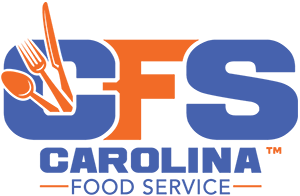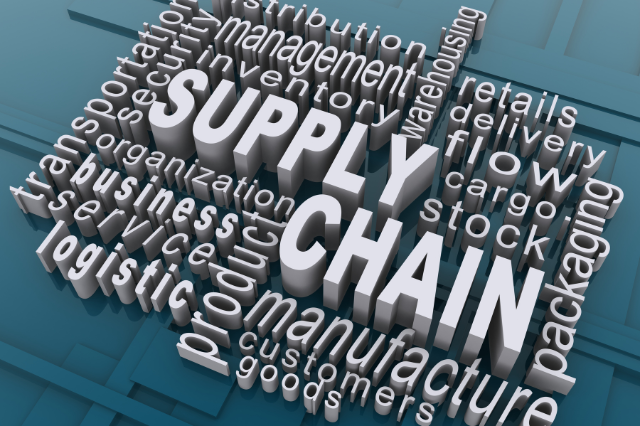
How the Food Service Supply Chain Works

Food service involves businesses selling food and beverages consumed out of the home. Consumers visit food services for several reasons, such as convenience, to sample new tastes and flavors, socialize, and celebrate. Food service businesses include restaurants, cafes, cafeterias, and hotels.
A food service supply chain refers to all the processes between when food is produced and when it gets to the consumer via a food service outlet. It is a long but important process to ensure the food service businesses run smoothly and customers remain satisfied.
The food service supply chain goes far beyond the logistics to the production stage, as there can be no supply chain without supply. So, the idea would be that the agricultural sector/farmers are the first stage of the supply chain.
This chain then extends to handling the harvested food, processing, and transportation to the food businesses that require them, and ultimately to the consumer. The entities involved in the food service supply chain include producers, vendors, warehouses, logistics companies, food service outlets, and consumers.
Since a food service supply chain is domino-like, when one part is affected, it extends to the whole food supply chain. This article explains each process involved in the food service supply chain and its importance. Contact Carolina Food Service for quality ingredients you can trust.
The Food Service Supply Chain
Food services such as restaurants require food and its ingredients to satisfy consumers. This food, however, must be produced and transported before it can get to the restaurants and, ultimately, the consumers. This is what the supply chain is all about.
Below, we’ve broken down and explained each part of the supply chain.
-
Production
This is perhaps the most important part of the supply chain. Production refers to the growing and harvesting of plants and the raising of animals to get the food that we eat.
The primary production stage of the supply chain includes agricultural activities, aquaculture, fisheries, and similar processes resulting in raw food materials. Most food comes from animals and plants, and their production occurs on small and large farms or ranches.
Some foods are caught or harvested from the wild, such as some fish, mushrooms, and some wild animals that can be consumed. Laws and regulations are also in place to ensure appearance, quality, and food safety.
-
Handling and Storage
Once food materials have been successfully harvested, they need to be stored before processing to avoid permanent damage leading to food wastage. This is also an important step in the food service supply chain. Storage facilities or methods include warehouses, silos, cribs, underground grain storage pits, barns, refrigerators, pyramid stacking, etc.
After food has been harvested, it is especially important to maintain correct storage throughout the food supply chain to decrease foodborne illness outbreaks. Spoilt food also cannot be passed down the supply chain, so getting this part right is vital.
-
Processing
This is the stage where food, both plants, and animals, gets converted into forms humans can conveniently consume. Food processing, preservation, production, and manufacturing are all interchangeable words that refer to the processes used to turn raw agricultural products — and in some cases products harvested from the wild — into edible foods.
Examples of ways food is processed include canning, fermentation, freezing, drying, pasteurization, irradiation, blanching, pickling, salting, freeze-drying, etc. With increasing numbers of units and forms of processed foods, the quality of the product becomes crucial.
While most companies maintain food safety and quality during production, it’s equally important to maintain security and quality while distributing and storing food products. Doing this ensures consumers can get the food at the same grade it was during processing.
-
Distribution and Logistics
This is the stage of the supply chain where raw or processed food is transported from the processing site to the food service outlet for use. Logistics and distribution companies are responsible for this.
They must also keep standard food and health practices to ensure food safety. Therefore, a food service needs to use a trustworthy food supply company.
Having a reliable food distributor is essential to keeping your business running smoothly. A good supplier will provide high-quality raw and canned ingredients that meet your exact specifications, and they'll be able to deliver those products on time and within budget.
-
Consumers
This is the last stage of the food service supply chain, where consumers eat the finished food product at a food service outlet. However, they can also eat the food at home.
How Does the Food Service Supply Chain Work?
It’s simple. Every stage explained above needs the other to be useful. So if one phase is faulty, it affects every other aspect of the chain.
Mishandling food at any point in the supply chain can result in illness. When this happens, the consumer needs to identify what part of the chain the contamination happened.
Once they do, they can file a civil action for damages. So, again, those involved in the supply chain must handle the food with the utmost care.
Importance of a Food Service Supply Chain
Now that you know how a food service supply chain works, you can begin to appreciate its importance. A quality food supply chain is vital in producing products that meet the customer demand for high-quality food.
The key to matching consumer demand for high-quality food products starts with a properly managed food supply chain, which will also help deter problems from arising and causing wastage down the line.
Food service supply chains are also essential in ensuring food safety and traceability of food products. This means manufacturers and consumers can easily trace contaminated food back to where it emerged.
Conclusion
This article fully explains a food service supply chain and how every stage involved works. If you’re a restaurant owner looking for food distribution services in North Carolina and South Carolina, Carolina Food Service is here for you.
Our team is always ready and happy to help potential and existing customers. We’ll work directly with you to find the products you need to keep your business thriving. Contact us today.